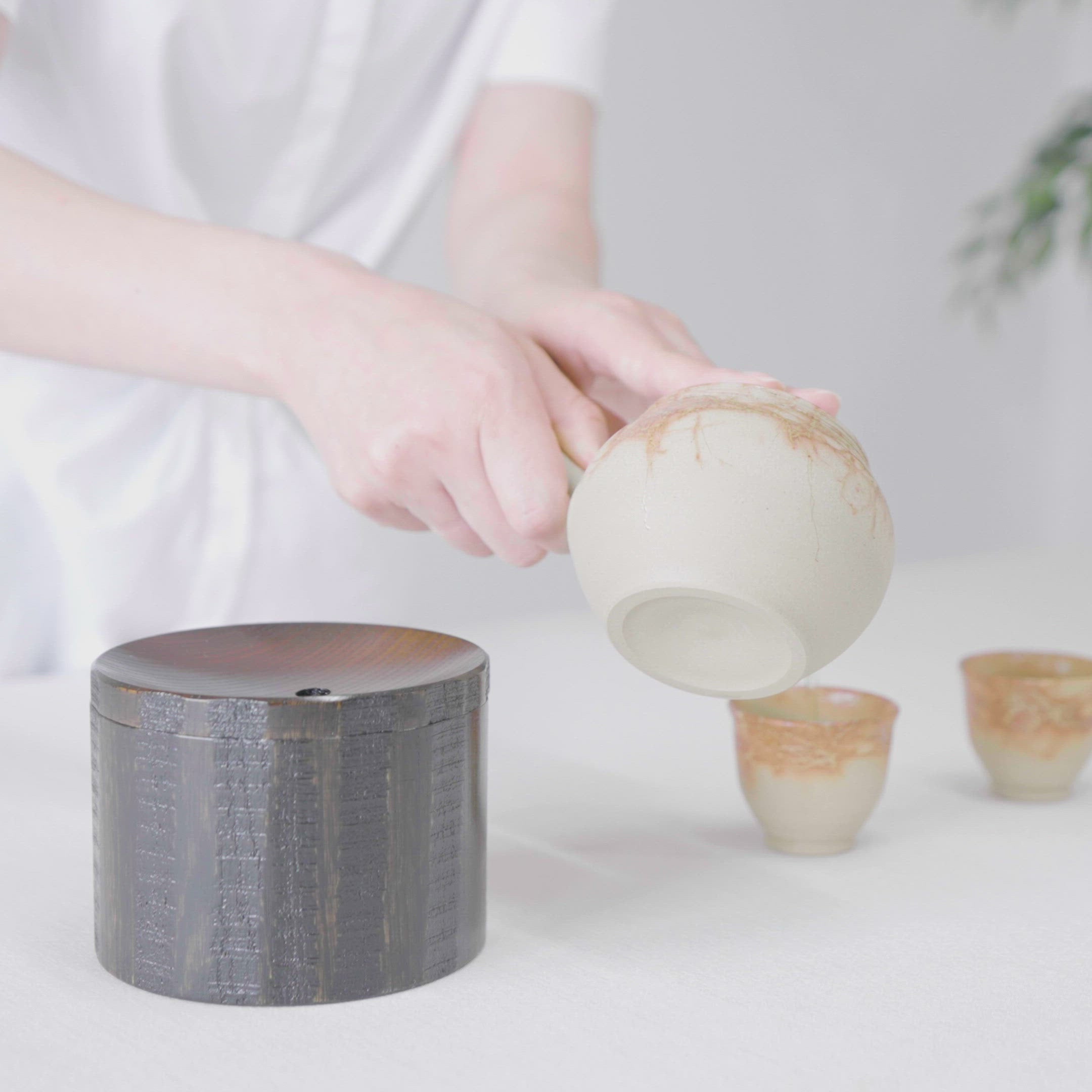












Nokome Yamanaka Lacquerware Chakoboshi Tea Waste Container
Estimated Shipping Widget will be displayed here!
If you have ever been to "ryokan(Japanese style inns)" you may have seen this item placed next to the Japanese tea set. Have you wondered what's it for?
"Chakoboshi", also known as "Kensui" is the Japanese tea utensil for collecting excess tea, water and leaves. The "chakoboshi" is used to first discard hot water used to warm up cups and the pot. When discarding the hot water, the top with the three holes is kept on. After you have made a couple of pots of tea, you will discard the leaves to make a fresh pot by taking off the lid and discarding the tea leaves in the container. Now you are ready to make a fresh pot of tea without the hassle of going to the kitchen to throw away the tea leaves.
This "chakoboshi" is made using zelkova and is coated with lacquer following the Yamanaka lacquerware craftsmanship. It is decorated using a technique called "nokome (saw pattern)" to create unique vertical lines.
With more people using tea bags and powered tea, unfortunately, the "chakoboshi" is now less seen in households. However, with this "chakoboshi", you can brew tea beautifully and properly, and delight your friends and guests with hospitality in the Japanese tradition.
If you already have a Japanese tea set, order this "chakoboshi" and make your Japanese tea set complete.
PRODUCT DETAIL
- Dimension: D11cm(4.3in) x H8.5cm(3.4in)
- Material: Zelkova Wood - Yamanaka Lacquerware
- Coating: Lacquer
- Origin: Made in Ishikawa, Japan
![]()
Choose options













Estimated Shipping Widget will be displayed here!
International Shipping
Multiple International Shipping Options
Discounted shipping for over 500000!
Free shipping for over 5000000!
Insured shipping service
Full compensation for any damage during transit.
Made by Japanese craftsmen
Fair Pricing, free Furoshiki wrapping!

